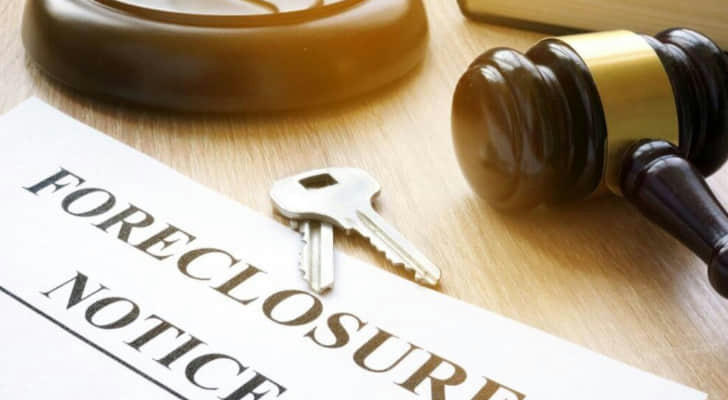From Default to Recovery: Understanding Foreclosure and How to Avoid It

What Is Foreclosure?
Foreclosure is the legal procedure in which a lender seeks to recover the balance of a defaulted loan by taking control of and selling the mortgaged property. Default usually occurs when a borrower fails to make a certain number of monthly payments, but it can also result from not adhering to other terms in the mortgage agreement.
Understanding Foreclosure
Foreclosure is based on the legal provisions in a mortgage or deed of trust contract, which allows the lender to use the property as collateral if the borrower fails to meet the mortgage conditions. While the specifics can vary by state, the foreclosure process generally starts when a borrower misses one mortgage payment. The lender will then send a notice indicating the missed payment.
If two payments are missed, the lender issues a demand letter, signaling a more severe warning than the initial missed payment notice, but still offering the possibility of making arrangements to catch up on payments.
After 90 days of missed payments, the lender sends a notice of default, transferring the loan to the lender’s foreclosure department. The borrower typically has an additional 30 days, known as the reinstatement period, to make up the missed payments and reinstate the loan. If the borrower fails to do so, the lender will proceed with the foreclosure process.
The Foreclosure Process: State Variations

• Different States, Different Rules
Foreclosure procedures differ across states, with each state having its own set of laws governing the process. These laws outline the required public notices from lenders, the homeowner's options to prevent foreclosure, and the timeline and process for selling the foreclosed property.
• Steps Leading to Foreclosure
Foreclosure, the final step where a lender seizes a property, usually follows a lengthy pre-foreclosure period. During this time, lenders often offer various alternatives to help homeowners avoid foreclosure, mitigating the negative impacts for both parties involved.
• Judicial Foreclosure
In 22 states, such as Florida, Illinois, and New York, judicial foreclosure is standard. This method requires lenders to go through the court system to obtain permission to foreclose by proving the borrower’s delinquency. If the court approves, the property is auctioned off by the local sheriff to the highest bidder, aiming to recover the owed amount. Alternatively, the bank may become the property owner and sell it traditionally to recoup its losses.
• Nonjudicial Foreclosure
The other 28 states, including Arizona, California, Georgia, and Texas, primarily use nonjudicial foreclosure, also known as power of sale. This process is generally faster than judicial foreclosure and bypasses the court system unless the homeowner files a lawsuit against the lender.
Duration of the Foreclosure Process
• How Long Does Foreclosure Take?
In the second quarter of 2021, properties undergoing foreclosure took an average of 922 days to complete the process, as reported by the U.S. Foreclosure Market Report from ATTOM Data Solutions. This was a slight decrease from the 930 days average in the previous quarter but a significant increase of 34.5% compared to the 685 days recorded in the same quarter of 2020.
• State-by-State Variations
The duration of the foreclosure process varies significantly by state due to different laws and timelines. For properties foreclosed in the second quarter of 2021, the states with the longest average foreclosure durations were:
Hawaii: 3,068 days
New York: 1,822 days
Indiana: 1,617 days
Conversely, the states with the shortest average foreclosure times during this period were:
Wyoming: 173 days
Arkansas: 253 days
Tennessee: 270 days
These variations reflect the diverse legal frameworks and procedural timelines across different states.
How to Prevent Foreclosure

Is It Possible to Avoid Foreclosure?
Even if you’ve missed a few mortgage payments, there are still strategies to help you prevent foreclosure. Here are some potential options:
Reinstatement: During the reinstatement period, you can catch up on your missed payments, including any interest and penalties, by a specified date. This allows you to bring your mortgage current.
Short Refinance: In this scenario, the lender agrees to refinance your mortgage for less than the current outstanding balance. The lender might forgive the remaining amount, thus helping you avoid foreclosure.
Special Forbearance: If you’re experiencing temporary financial difficulties, such as high medical bills or reduced income, your lender might allow you to reduce or suspend your payments for a certain period.
Important Notice:
Mortgage lending discrimination is against the law. If you believe you’ve faced discrimination due to race, religion, sex, marital status, public assistance usage, national origin, disability, or age, you can take action. Consider filing a complaint with the Consumer Financial Protection Bureau (CFPB) or the U.S. Department of Housing and Urban Development (HUD).
Impact of Foreclosure
• What Happens After Foreclosure?
When a property doesn't sell at a foreclosure auction or if no auction takes place, lenders—usually banks—often take possession of the property. These properties are then added to the bank's portfolio of foreclosed properties, known as real estate owned (REO).
Foreclosed homes are usually listed on bank websites, making them accessible to potential buyers. Real estate investors may find these properties appealing because banks sometimes sell them at a discount to their market value. However, selling at a discount can result in financial losses for the lender.
• Effects on Borrowers
For the borrower, foreclosure has a significant impact on their credit report. It typically appears within one or two months after the process begins and remains on the credit report for seven years from the date of the first missed payment. After the seven-year period, the foreclosure is removed from the credit report.
